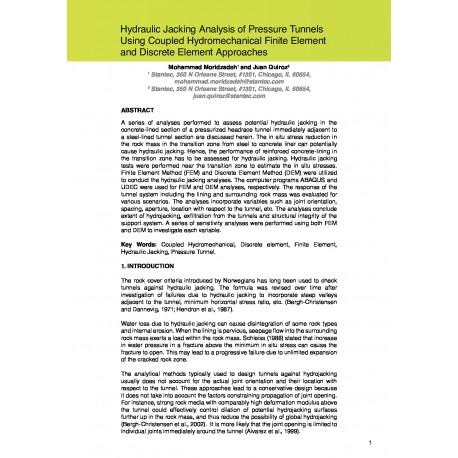Cart
0
0
No document
0,00 €
Total
Document successfully added to your shopping cart
Quantity
Total
There are 0 items in your cart.
There is 1 item in your cart.
Total documents
Total shipping
To be determined
Total
Search & filter
Search for a publication
Search & filter

Hydraulic Jacking Analysis of Pressure Tunnels Using Coupled Hydromechanical Finite Element and Discrete Element Approaches
2944_hydraulic_jacking_analysis_
A series of analyses performed to assess potential hydraulic jacking in the concrete-lined section of a pressurized headrace tunnel immediately adjacent to a steel-lined tunnel section are discussed herein. The in situ stress reduction in the rock mass in the transition zone from steel to concrete liner can potentially cause hydraulic jacking. Hence, the performance of reinforced concrete-lining in the transition zone has to be assessed for hydraulic jacking. Hydraulic jacking tests were performed near the transition zone to estimate the in situ stresses. Finite Element Method (FEM) and Discrete Element Method (DEM) were utilized to conduct the hydraulic jacking analyses. The computer programs ABAQUS and UDEC were used for FEM and DEM analyses, respectively. The response of the tunnel system including the lining and surrounding rock mass was evaluated for various scenarios. The analyses incorporate variables such as joint orientation, spacing, aperture, location with respect to the tunnel, etc. The analyses conclude extent of hydrojacking, exfiltration from the tunnels and structural integrity of the support system. A series of sensitivity analyses were performed using both FEM and DEM to investigate each variable. Coupled Hydromechanical, Discrete element, Finite Element, Hydraulic Jacking, Pressure Tunnel.


